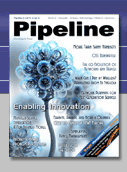article page
| 1
| 2
| 3
| 4
| 5
| 6
| 7
| 8
|
known features and functions of service control points in order to behave in a predictable and secure fashion, even faced with the potential chaos of complex networks.
Sometimes a service which is resident on a device will be owned or well known to the networks and companion devices, and at other times it will be novel. The networks need some way of trusting the device as it connects: that the device is who and what it claims to be and that the services it offers or loads are secure.
We have a lot of tools. For example, 3GPP optional onboard element agents are a start towards self management. RDF and the semantic network is a strong start on identity. But for a unified Device Management Framework, autonomic agents will be necessary. And to resolve the different management network groups to which devices can belong during their service life, collaborative interconnect architectures, such as the service aggregator, the rendezvous service, and persistent queue pipes are required.
The scope of what we mean by management will continue to expand....
The number of devices will continue to grow...
The capability of devices will continue to evolve in many different ways...
Device management as traditionally conceived seems inappropriate for the scale and diversity of the problem.
We must stop thinking of (i) product services, (ii) network software, (iii) network & service management, and (iv) device management as separate disciplines with differently skilled practitioners using very different reference architectures and their "only-invented-here" approaches. Convergence is occurring and must accelerate. The TMForum Device Management team understands this and needs help reaching a collective solution.
Yahoo's Fire Eagle is a harbinger of what is happening in the OTT service providers. "Fire Eagle is a network service that gives users a place to store and manage information about their location, and offers developers protocols



